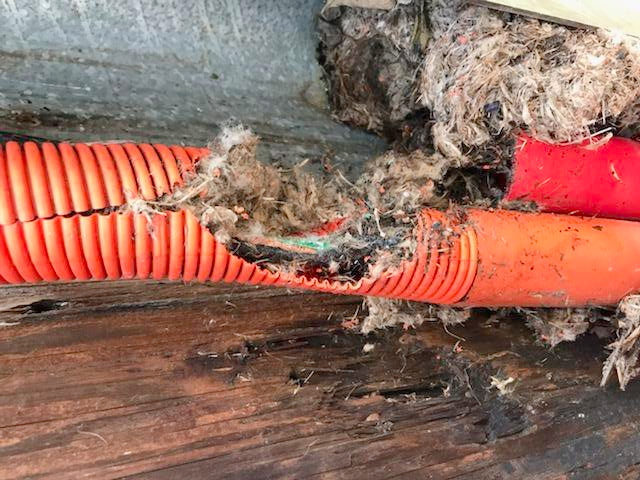
Squirrels and backhoes are just a few of the things that can cause havoc for the university’s core fiber network. Over the past year, the network has fallen victim to squirrels chewing through fiber cables and construction backhoes inadvertently digging in the wrong place. Both could have caused network outages for U-M, but because of the redundant design of the network, both incidents were non-events that campus was not even aware had occurred.
What is redundant design?
The U-M network is designed to have several fiber paths to locations around campus so that when one fiber path is disabled, sophisticated network electronics and routing automatically reroutes traffic to another path. As a result, users on campus are not affected by a potentially disabling fiber cut. As network usage grows at a rapid pace, ITS continues to add more redundant paths to our network and increases the fiber count that is available through those paths.
Three expansion projects
Currently, ITS is working on three fiber expansion projects on the Ann Arbor campus:
- From the South Campus (including WoTo, MACC and Athletics) to Central Campus
- From Central Campus to North Campus
- From North Campus to East Campus (including Domino’s Farms and Arbor Lakes)
The fiber path from South Campus to Central Campus is being built in partnership with DTE Energy. Currently, construction is underway on State Street as DTE installs additional power lines along this route. Working alongside DTE to take advantage of this opportunity will save significant cost to the university to install this needed network fiber capacity.
“Future proofing” for reliability
As more of our communications needs rely on the IP Network and on fiber, this additional capacity also allows ITS to “future proof” the core network and ensure that we have the network capacity that campus will need moving forward. These additional fiber paths provide significant benefits to all of the Ann Arbor campus, including Michigan Medicine, which recently purchased the 777 building on E. Eisenhower Street.
So although squirrels and backhoes will continue to keep network operations on their toes, our redundant fiber paths will continue to reduce the chances of a “fiber cut” creating a network outage for the U-M Network.
